Haridwar & Badrinath
Holy cities of Haridwar, Rishikesh & Badrinath


Day 2
The day started with an early morning visit to the Veda Vyas temple, situated in the same compound as the Mutt. It was followed by an auto ride to the base of the Chandi Devi temple. This temple is situated atop the Neel Parvat on the Eastern summit of the Shivalik Hills, which is the southernmost mountain chain of the Himalayas. The access to the top of the hills is via a 4-km trek or by cable car ropeway. We took the 20 minute cable car to the top of the beautiful Shivalik Hills. This is locally known as the ‘Ropeway to God’.
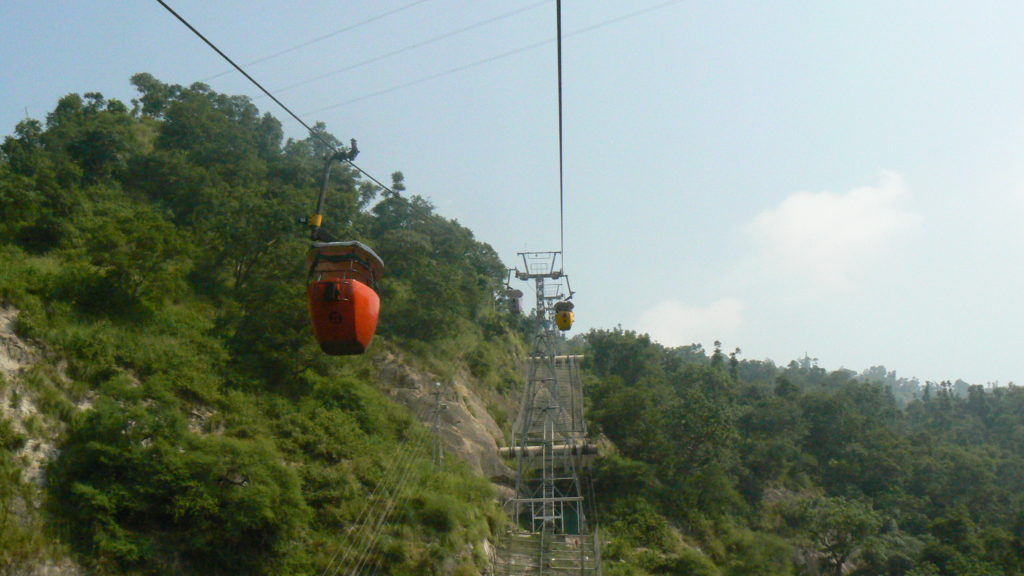
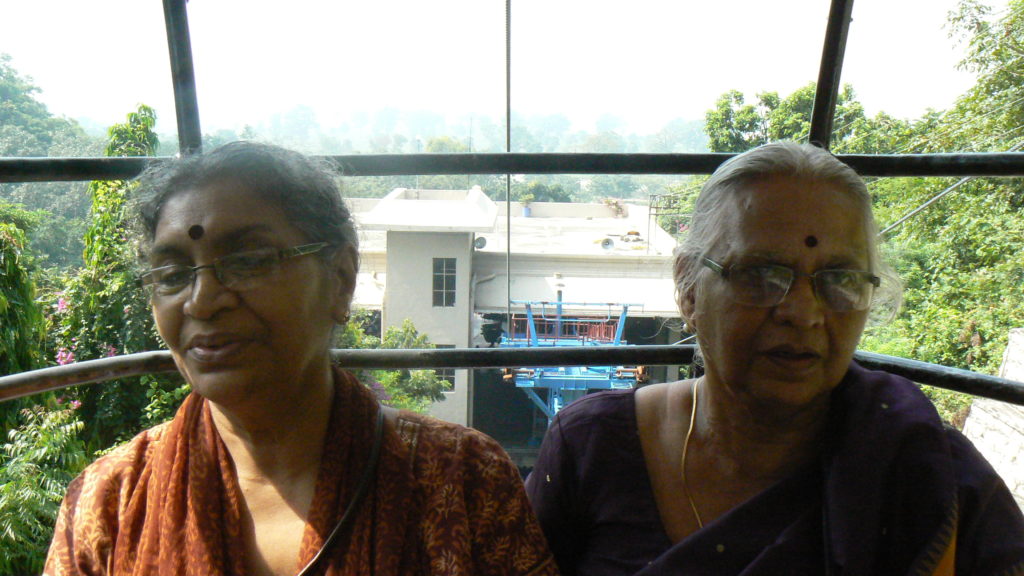
After the Darshan at Chandi Devi temple, we came back to foot of the hills and took another cable car ride to Mansa Devi Temple. Mansa Devi temple is situated atop Bilwa Parvat hills, also part of Shivalik Hills.
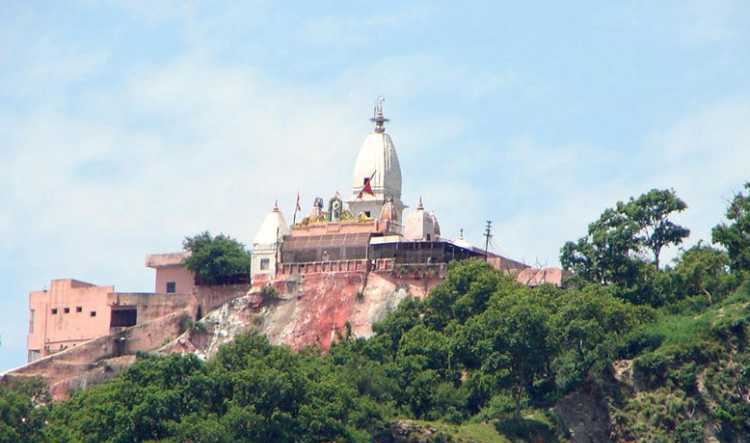
After a quick lunch and a short shut-eye, we went to Bharat Matha Temple, which is situated around 2 km from Vyas Mutt. It is an eight-storey structure dedicated to Bharat Matha. Each floor is devoted to a particular theme.
- First floor is dedicated to Bharat Mata (Mother India) it has the statue of Bharat Mata.
- Second floor (Shoor Mandir) is dedicated to the well renowned heroes of India.
- Third Floor (Matru Mandir) is dedicated to the achievements of India’s revered women such as Meera Bai, Savitri, Maitri etc.
- Fourth Floor (Sant Mandir) is dedicated to the great saints from various religions, including Jainism, Sikhism and Buddhism.
- Fifth Floor is dedicated to depicting symbolic coexistence of all religions practiced in India and paintings portraying history and beauty in various provinces of India .
- Sixth Floor is dedicated to the various forms of the Goddess of Shakti.
- Seventh Floor is devoted to all incarnations of Lord Vishnu the preserver form of the holy Hindu Trinity.
- Eighth Floor is dedicated to the shrine of Lord Shiva, the supreme god in Hindu tradition
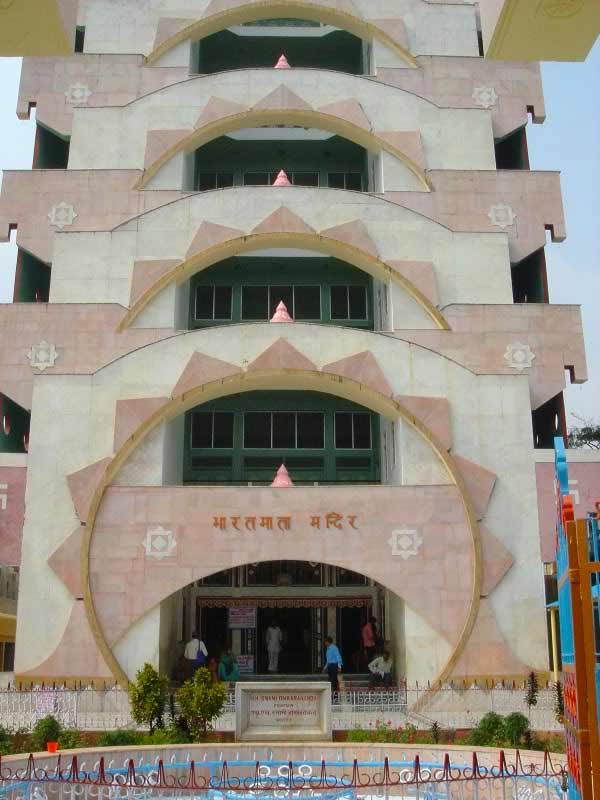
From there its a 4 km drive to the Daksh Mahadev Temple. It is believed to be the site where Dakshayaga was conducted. This is a small temple, but with such a significant history behind it. The actual yagjnakund can also been seen there. Here is the famous statue of Lord Shiva carrying the lifeless body of his wife Sati after she jumps into the yajna fire.
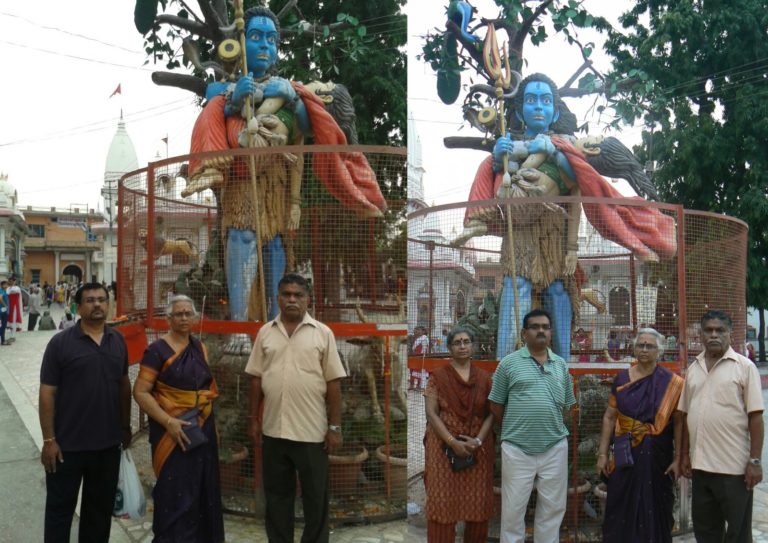
From Daksh Mahadev Temple, we took a local cycle rikshaw to Ganga Aarti Stall at Har-ki-Paur to see the Ganga Aarti.
Every evening, as dusk descends, the Ganga Aarti is performed at the three holy cities of Haridwar, Rishikesh & Varanasi. The aarti is carried out facing the river. The lamps are lit and circled around by the pandits in a clockwise manner, accompanied by chanting of songs in praise of Mother Ganga. The Haridwar Ganga Aarti is held at Har-ki-Paur ghat. The name of this famous ghat literally means “Feet of the Lord”. A footprint on a stone wall there is said to belong to Lord Vishnu.
Har-ki-Paur is the famous ghat on the banks of the Ganges in Haridwar. This revered place is the major landmark of the holy city of Haridwar. It is believed that it is precise spot where the Ganges leaves the mountains and enters the plains. The ghat is on the west bank of Ganges canal through which the Ganges is diverted. Har-Ki-Paur is also the area where millions of pilgrims converge and the festivities commence during the Kumba Mela. Thousands of people come here daily to perform the Aarti.
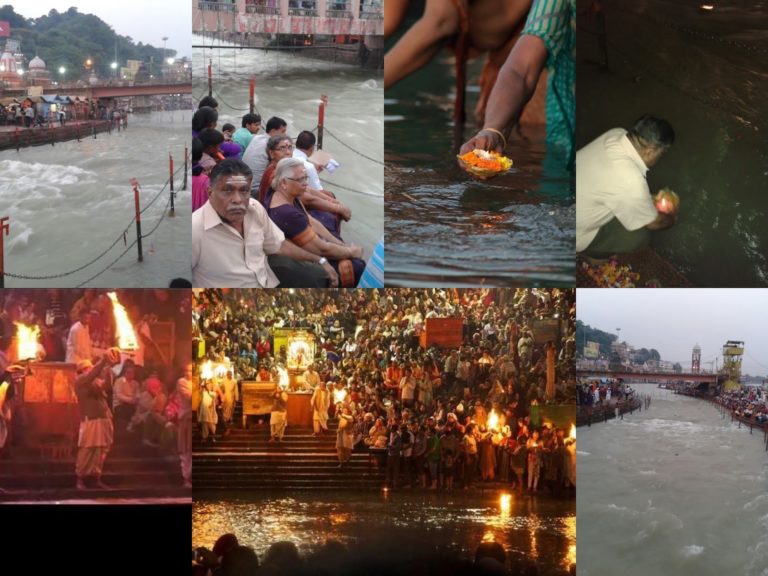
Day 3
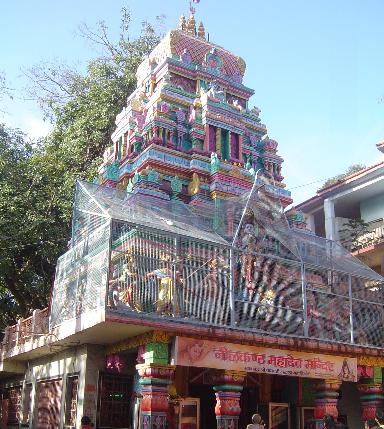
From there we went to Lakshman Jhula & Ram Jhula. These are 2 suspension bridges built across River Ganges in Rishikesh. This is believed to be built by Lakshmana at the same location using Jhula (ropes). Atop the Jhula is the best place to view the white-water rafting by adrenaline junkies in river Ganges. The water currents under the Jhula can reach up to 50 kmph during rainy seasons.
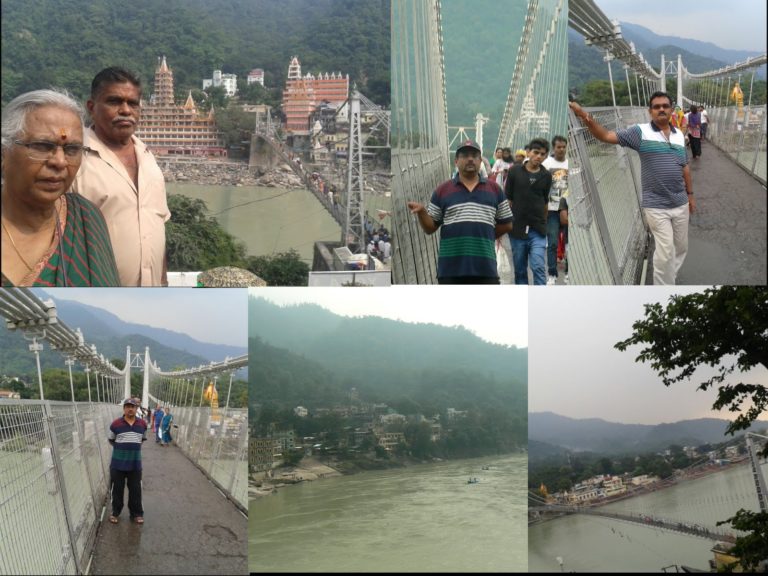
Day 4
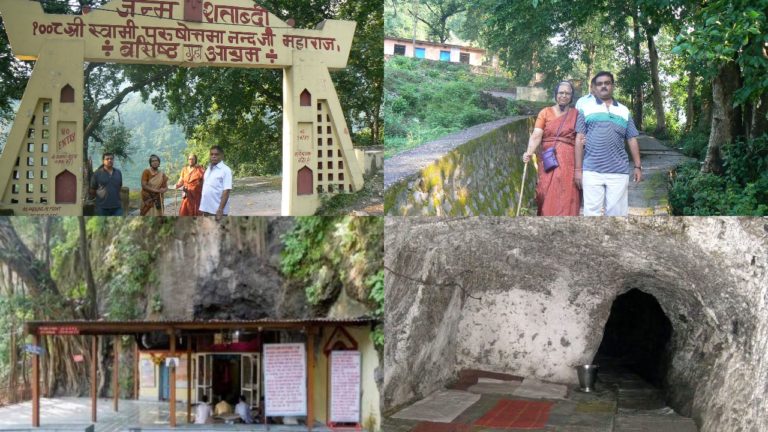
After driving 50 kms from Vashist Guha we reached the celestial town of Devaprayag. It is situated at an elevation of 830 metres above sea level. Devaprayag is the last Prayag or the holy confluence of the Alakananda River, from here that the confluence of Alakananda and Bhagirathi River and becomes a single river and takes the name Ganga. Alakanandha river starts from Satopanth Glacier and flows 195 kms before reaching Devaprayag, whereas Bhagirathi river starts from Gangotri glacier and flows 205 km to Devaprayag. Alakananda contributes a significantly larger portion to the flow of the Ganges than the Bhagirathi.
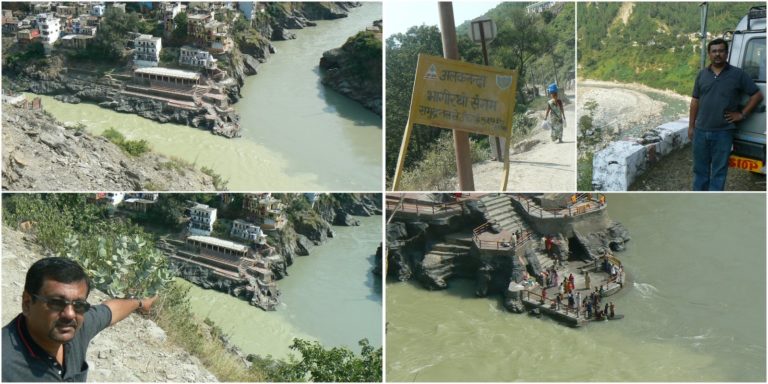
Another 2.5 hours drive, passing through the towns of Srinagar and Kirtinagar, we reached Rudraprayag which is 70 kilometres away from Devaprayag. Detour to Kedarnath starts from Rudraprayag. This small town is at an elevation of 900 meter is the place of confluence of rivers Alakananda and Mandakini. Mandakini river starts from Chorabari Glacier in Kedarnath and flow 72 km before reaching Rudraprayag.
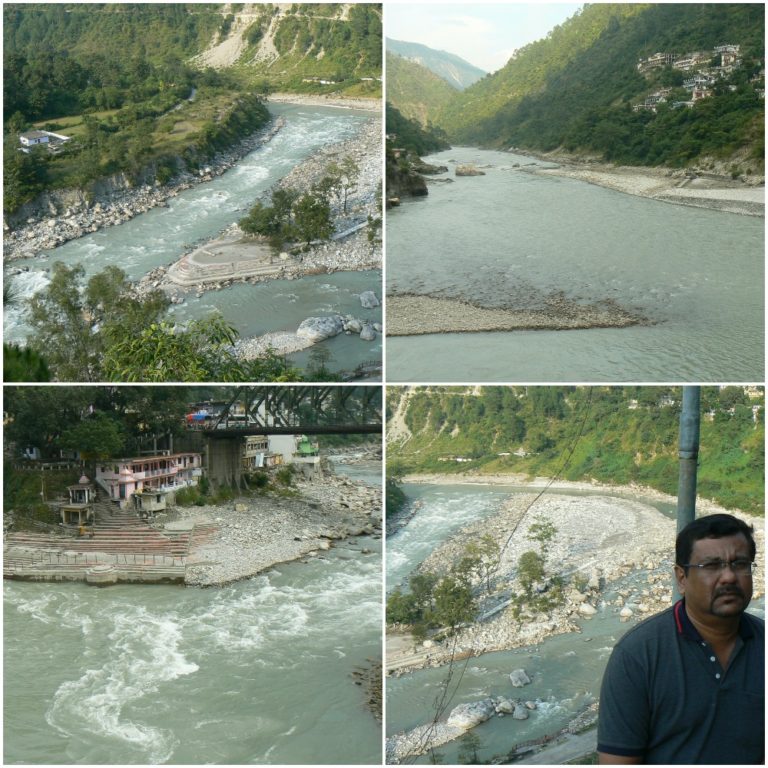
35 kms away is Karnaprayag which is the third of the Panch prayags and is the confluence of Alakananda and Pindar rivers. Pindar river starts from Pindari Glacier and flows 105 kms before reaching Karnaprayag. It is believed to the place where Karna was cremated by Lord Krishna.
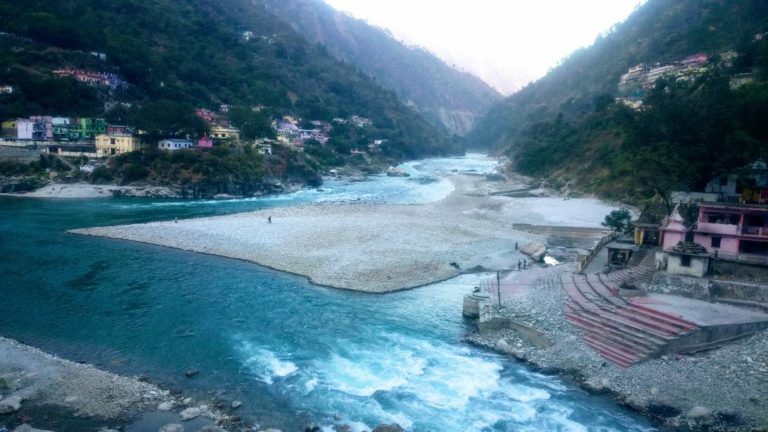
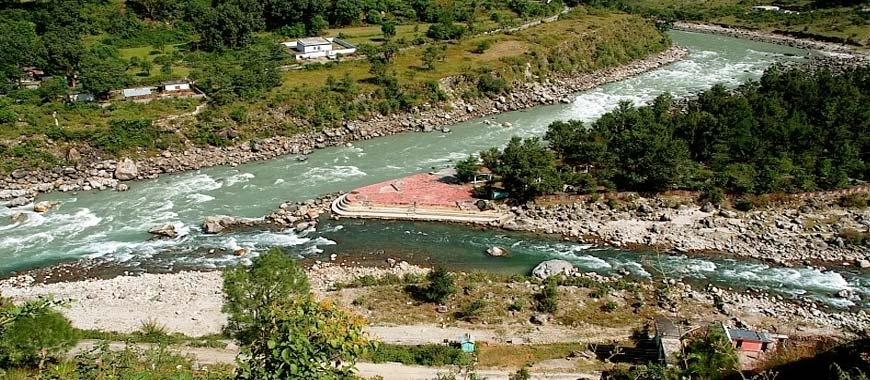
By 5.00 pm, we reached Nandaprayag, which is about 25 km from Karnaprayag. Nandaprayag is the confluence of River Alakananda and Mandakini. This small town is situated at an altitude of 1300 meters . Mandakini river originates from Nanda Devi Peak and flow 56 km before reaching Nandaprayag.
By 7 pm, we reached Pipalkot in Chamoli District, which is popular halting point for all tourists going towards Badrinath and Hemkund Sahib. We had already booked our stay in a hotel called Sudharshan Palace. The temperature at Pipalkot was round 0 degrees by night. We had the first glimpse of the mighty Himalayas in a distance from Pipalkot.
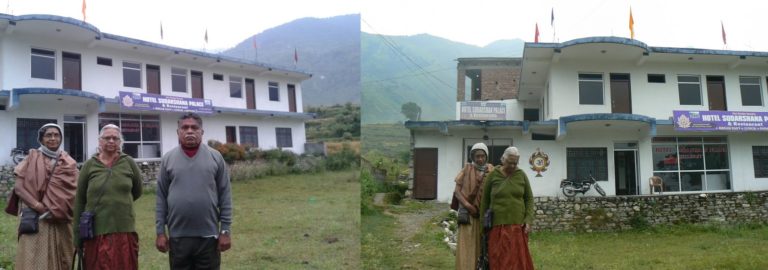
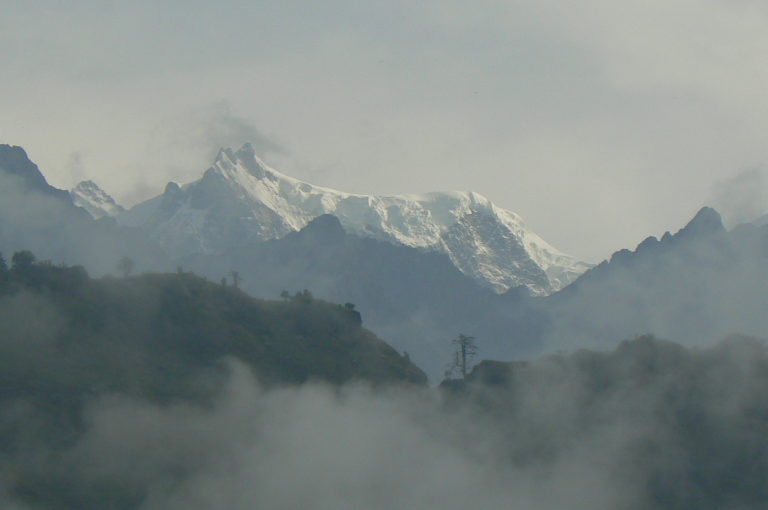
Day 5
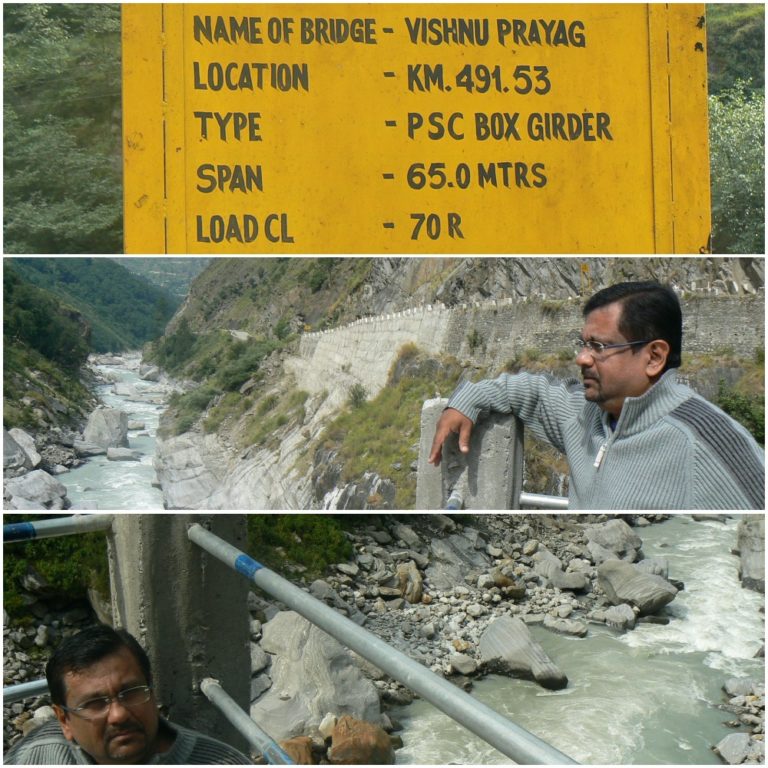
Immediately after Vishnuprayag we reached one of the main entrances to the Nanda Devi Biosphere Reserve enroute to Valley of flowers and Nanda Devi National park.
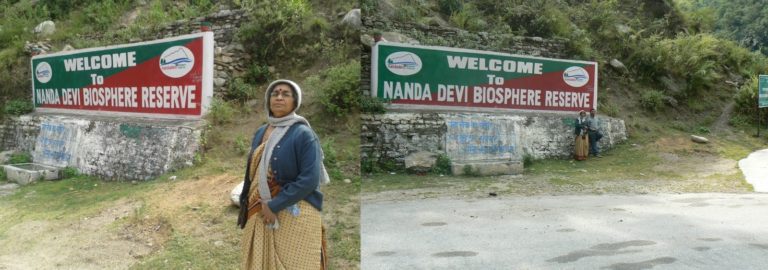
After passing through Hanuman Chatti (mythological spot where Bheem met Hanuman on way to pluck Kalyanasougandika flowers for Draupadi) and Ekadashi caves (place where Lord Vishnu came and took rest after the Mahabharatha battle), we reached the township of Badrinath by 1.00 pm.
We had already booked our stay at Kashi Mutt, which is also part of the Vyas Mutt management.
After settling down at Kashi Mutt, our first stop was at the last village along India-China Border. It is called Mana village.

At the entrance of the village there is a narrow hike of around 200 meters to reach Vyas Guha. The cave is preserved for over 2000 years.
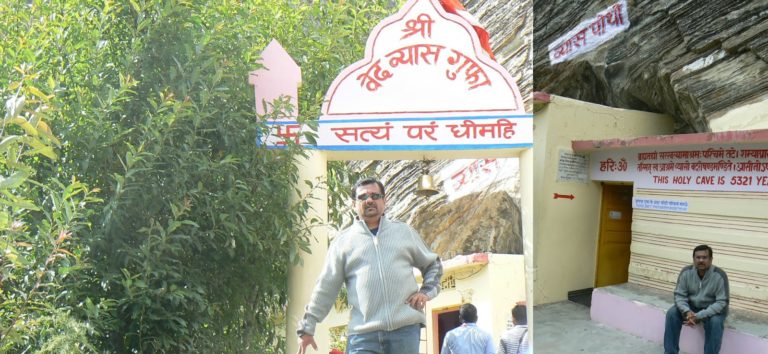
In Mana village we had the first sight of River Saraswathi which merges with Alakananda river at Keshavprayag before disappearing behind the rocks and supposedly flows underground in the plains.
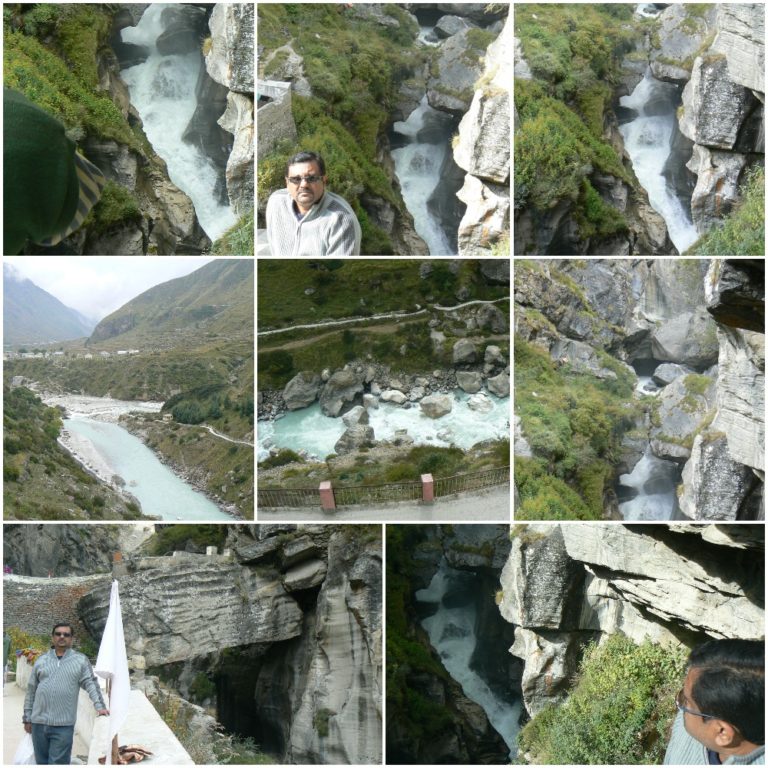
From there one can have a glimpse of Vasudhara falls which is around 15 km hike from Mana village. Vasudhara falls is supposedly the final resting of the pandavas who fell one by one until Dharmaputra was the last one standing.

After Mana village we had our first darshan at Badrinath temple at around 6.00 pm. The main diety is Lord Vishnu surrounded by Kubera, Garuda, Narada & the Nara-narayanas. The main pooja was at 6.30 pm followed by shayana-pooja (sleeptime pooja) at 8.30. This was followed by a holy dip at the hot spring within the temple compound. We returned to our rooms by 9.00 and had a good rest after a day of divine and scenic beauty.
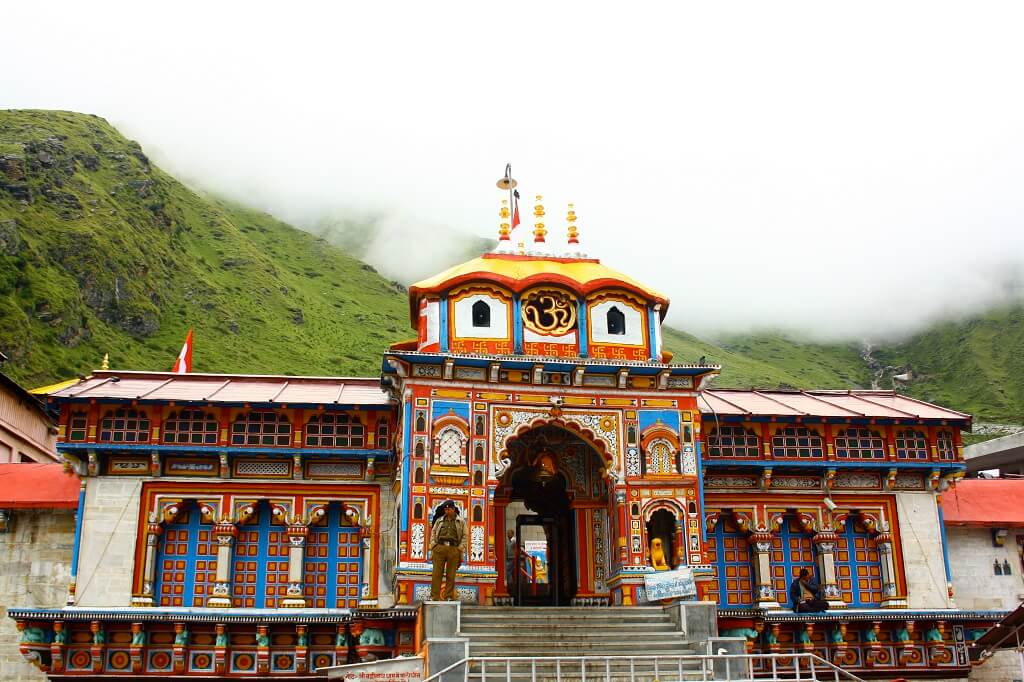
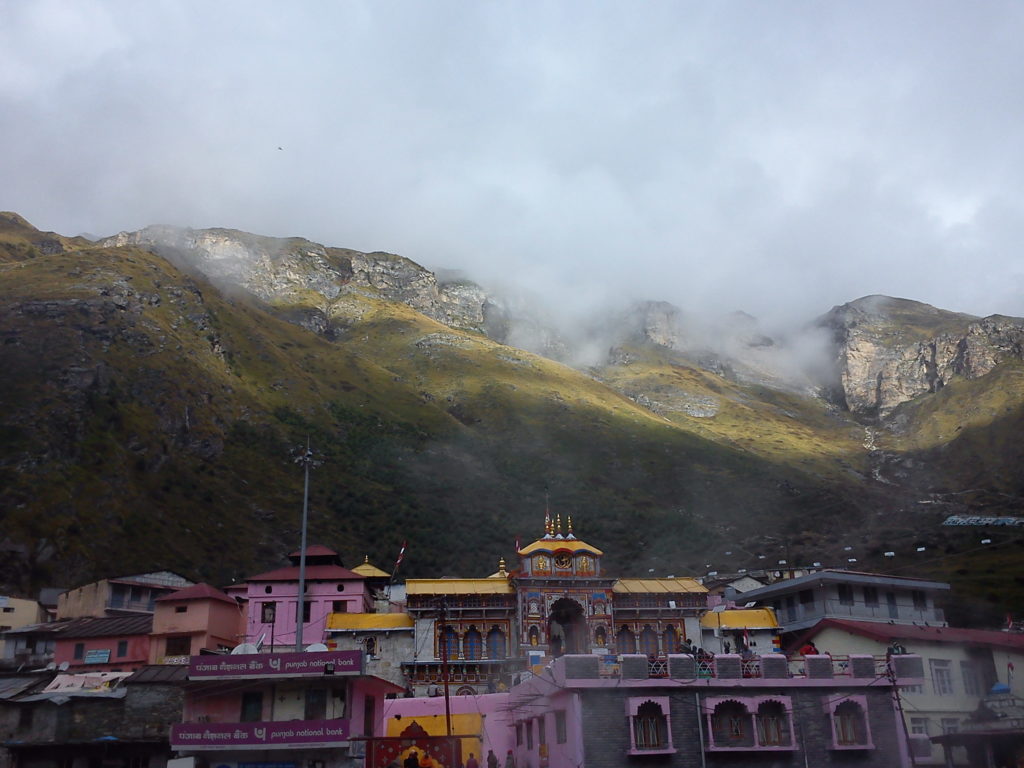
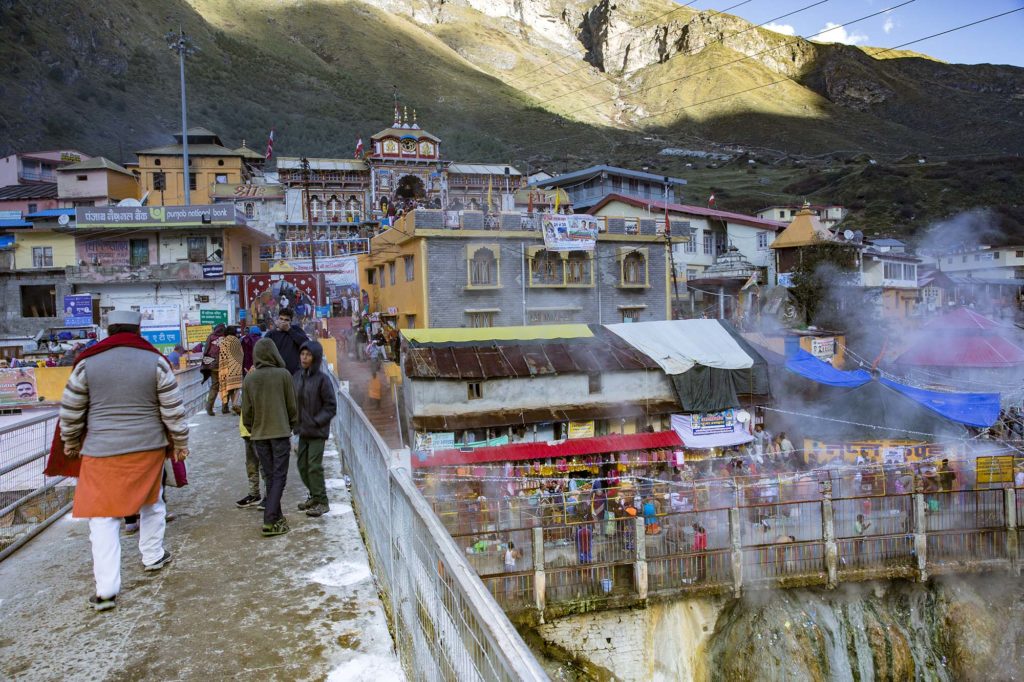
Day 6
After seeing the beautiful golden sunrise at the Neelkant hills, we spent time around Vyas Mutt to enjoy the beauty of Badrinath which was embraced with the morning mist and the milky clouds.
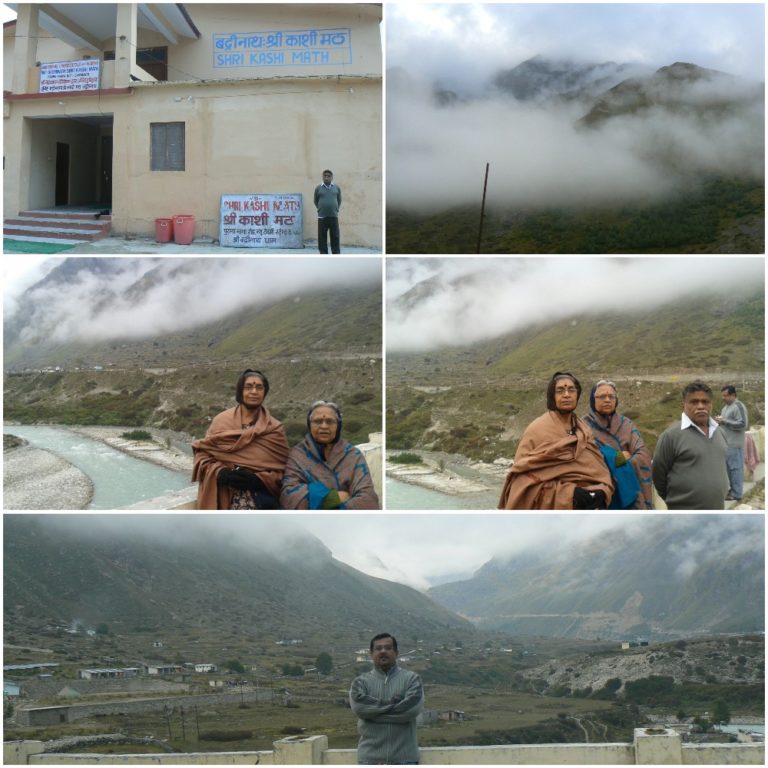
We started back from Badrinath towards Chopta via Vishnuprayag and Rudraprayag. The drive from Badrinath to Chopta took 7 hours through very tough and broken terrain even though it is only 160 kms. Chopta is an unspoiled natural destination lying in the lap of the Uttarakhand Himalayas and offers views of the imposing Himalayan range including Trishul, Nanda Devi and Chaukhamba. It is located at an elevation of 2,680 metres (8,790 ft) above sea level. There are only 55 residents in the village, who will relocate to Pipalkot during winter. There are no electrical connections in Chopta. The entire town and its business runs on oil and batteries. Solar panels are used to light up the village and houses, which can run upto 4 hours. So, by 7 pm the entire village is closed down and in complete darkness. The temperature there is 6 degrees and freezing cold with no heating devices.
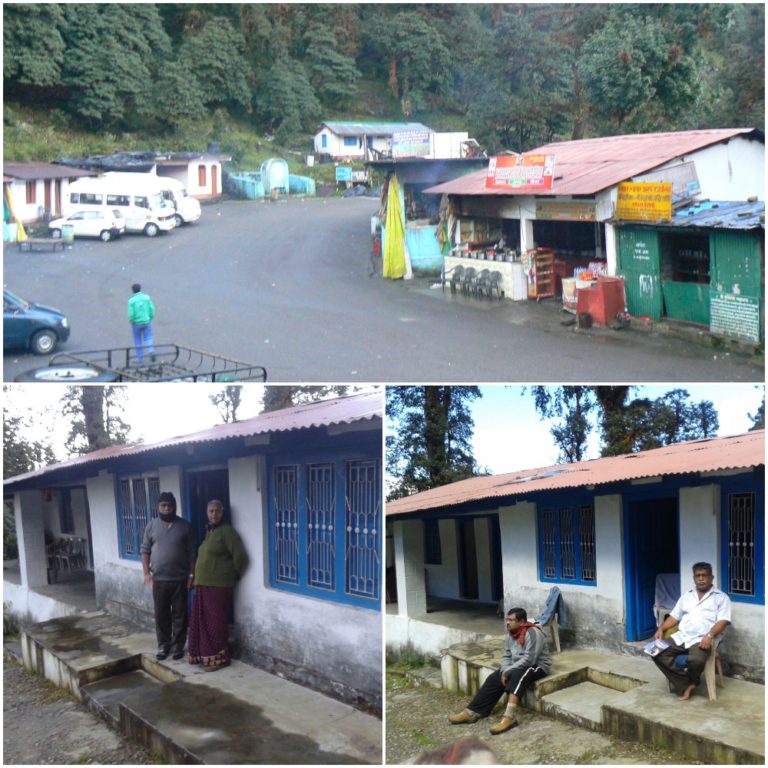
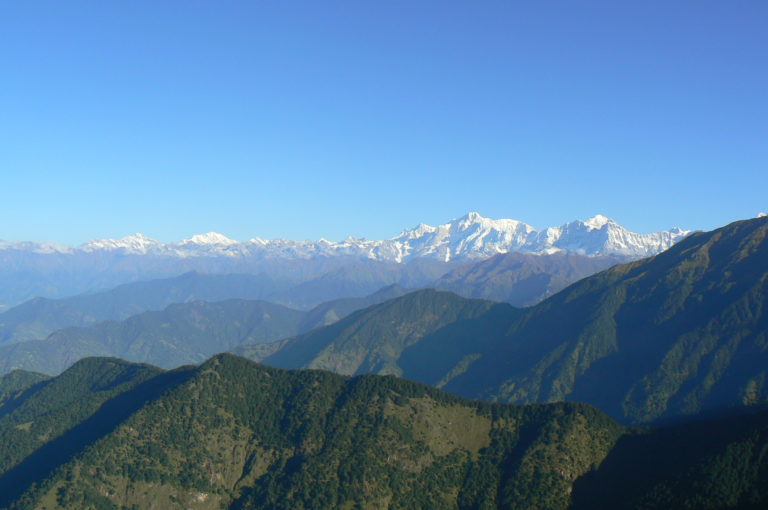
Day 6
By 7 am we were off to see the Tunganath Temple. The Tunganath temple is indelibly linked to the origin of the Panch Kedar temples built by the Pandavas. The legend states that sage Maharishi Vyas advised the Pandavas that since they were culpable of slaying their own relatives (Kauravas) during the Kurushethra war, their act could be pardoned only by Lord Shiva. Consequently, the Pandavas went in search of Shiva who was avoiding them since he was convinced of the guilt of Pandavas. In order to keep away from them, Shiva took the form of a bull and went into hiding in an underground safe haven at Guptakashi, where Pandavas chased him. Bhima identified Shiva’s cow form and tried to catch it by its horns, which lead to an explosion of the cow’s body into 5 pieces. Later, Shiva’s body in the form of bull’s body parts rematerialized at five different locations that represent the “Panch Kedar”. The Pandavas built temples at each of these locations to worship and venerate Lord Shiva, seeking his pardon and blessings. Each temple is identified with a part of the bull or Shiva’s body; Tungnath is identified as the place where the bahu (hands) were seen; hump was seen at Kedarnath; head appeared at Rudranath; his navel and stomach surfaced at Madhyamaheshwar; and his jata (hair or locks) at Kalpeshwar.
Tunganath temple is one of the highest Shiva temples in the world and is about 5 kms from Chopta. You can reach there by walk or a mule ride. We decided on the second option and went on a scary ride on muleback which cracked every bone on our bodies. But the view enroute to Tunganath is simply breathtaking.
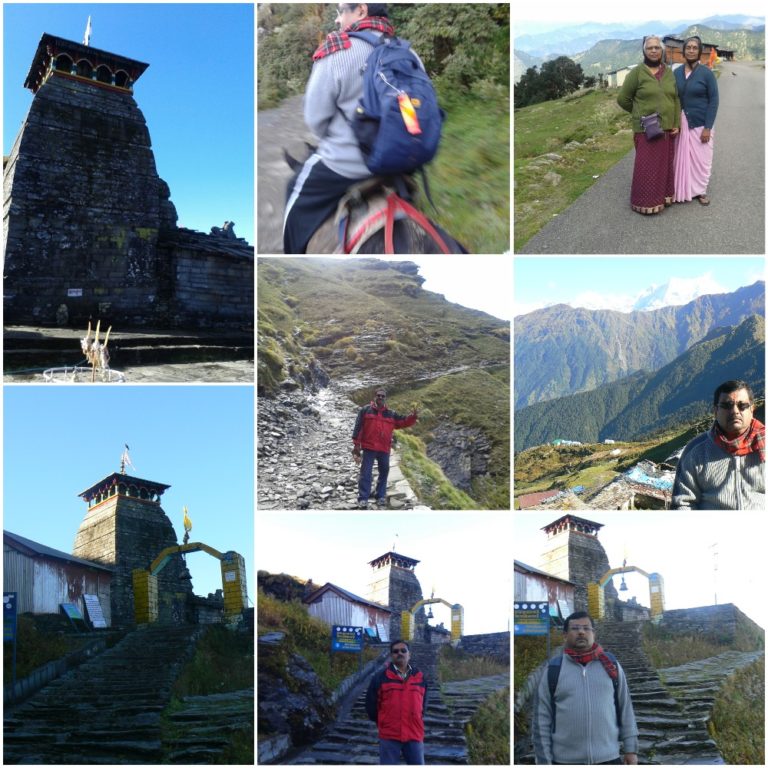
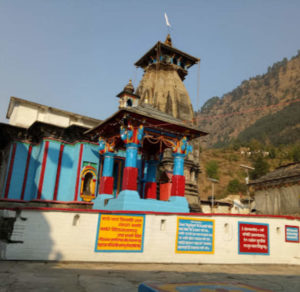
It took us around 3 hours to complete the temple visit and then continued our onward journey from Chopta. After a 2 hour drive along the banks of river Mandakini, we reached the holy town of Ukhimutt where the idols of Kedarnath are brought in winter to be worshipped at Omkāreshwar Temple. This is also believed to the place where the wedding took place of Aniruddh (grandson of Krishna) and Usha (daughter of Banasur). From there we started our journey back to Haridwar via Rudgraprayag, Devaprayag and Rishikesh. We reached Vyas Mutt by late night.
Day 7
The Final day started by having a holy dip in the Ganges near Vyas Mutt and nice breakfast.
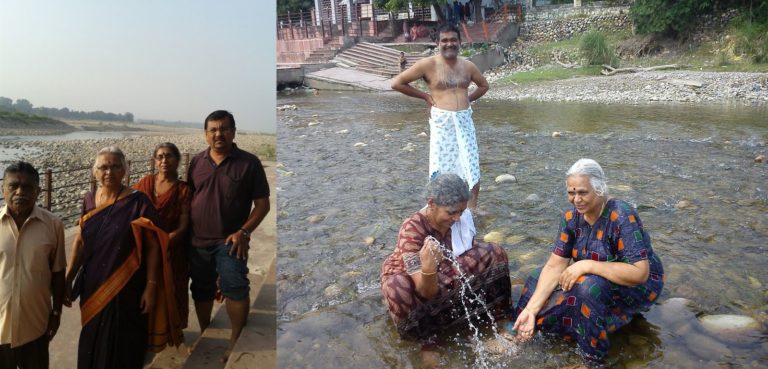
I said goodbye to my family and boarded a train to New Delhi and from there to Bangalore.
This trip, although meant to be religious, impacted me in several other unexpected ways. I was fascinated by the scenic beauty and the ecological importance of all the places I visited. My brother often chimed in with timely comments on the mythological world surrounding the holy place.
Through this trip I took home not just souvenirs and trinkets, but also newfound respect for the Indian culture and memories that last a lifetime.